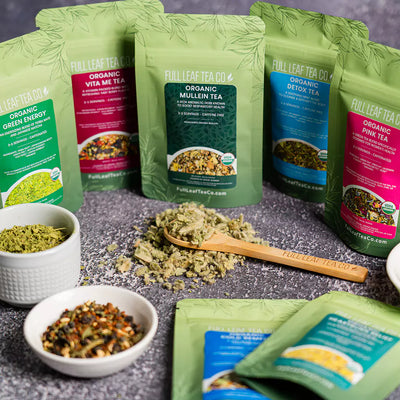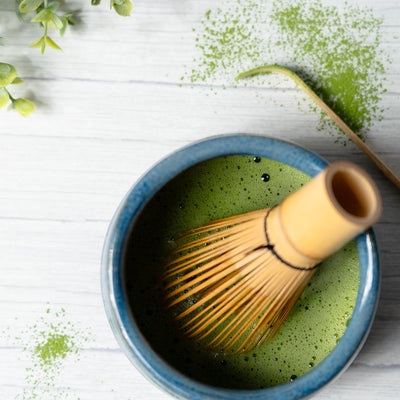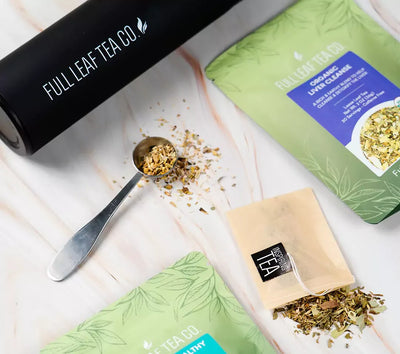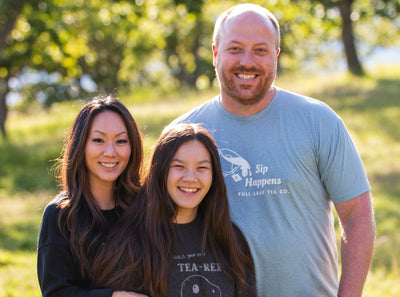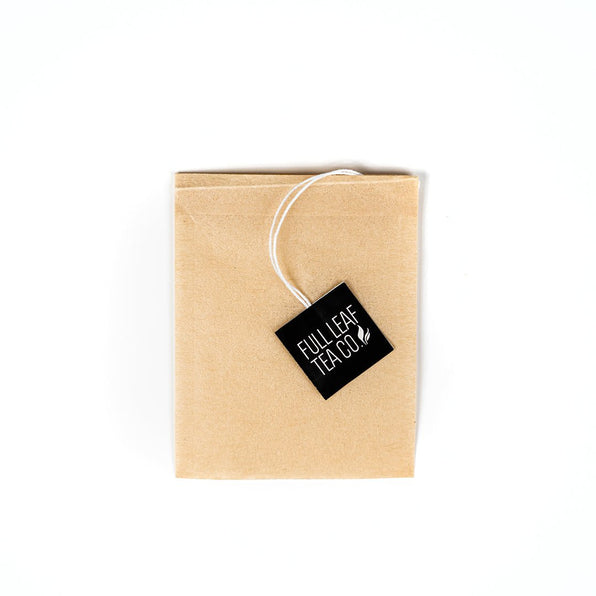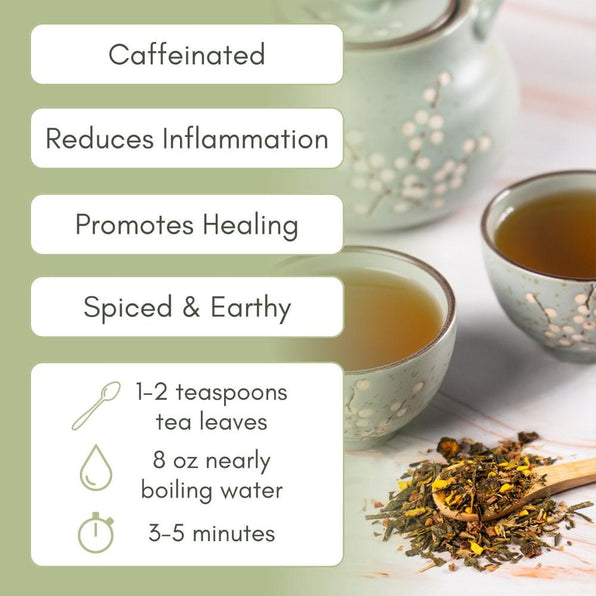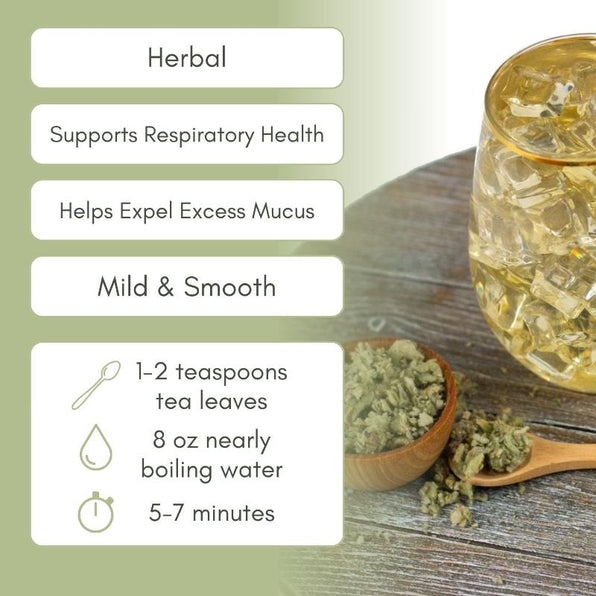1. What is matcha?
Matcha is a powdered green tea from the Camellia Sinensis plant. Matcha is produced by grinding down the most delicate green tea leaves into a super fine powder. This green tea powder can be whisked with water to make a cup of tea, a matcha latte, or blended into smoothies and recipes for a health boost!
You'll want to make sure your matcha is Japanese matcha and not Chinese matcha. Chinese matcha typically contains rice fillers and is of lower quality. That's not fun!
2. What makes matcha different from regular green tea?
The tea leaves of good matcha powder are shade-grown to produce higher levels of chlorophyll. The vibrant bright green powder comes from higher levels of chlorophyll and is packed with more caffeine and health benefits than traditional green tea.
Traditional green tea is not ground into a powder and does not have the same levels of chlorophyll. Traditional green tea will also have lower levels of caffeine than matcha powder.
3. What are the health benefits of drinking matcha?
Remember how the Camellia Sinensis plant is grown to produce extra chlorophyll? This extra step in the plants' production means powdered matcha is an excellent overall health booster. When it comes to health, matcha benefits more than regular green tea. This is because you are consuming the entire tea leaf rather than steeping and subsequently removing the leaf.
Matcha is one of the highest sources of antioxidants available. Having considerably more antioxidants than black tea, matcha is a contender with other superfoods like goji berries and blueberries!
If you're looking for matcha with the highest amount of antioxidants, you'll want to try our ceremonial grade matcha, which is the best matcha powder for health and traditional steeping.

Perhaps one of the most intriguing things about matcha is the fantastic energy boost it provides. Matcha is often used as a substitute for coffee because it helps increase energy and focus. However, people usually prefer it over coffee because when you drink matcha, there is no caffeine crash.
Some of the other health benefits of matcha include reducing cancer risk, lowering cholesterol, decreasing stress, and detoxing the body.
4. What are the differences between the different grades of matcha?

We carry three different grades of matcha, listed in order of highest to lowest quality:
-
Ceremonial grade matcha. (Highest quality, youngest tea leaves).
-
Premium grade matcha. (Great quality, younger leaves).
-
Culinary grade matcha. (Lower quality, mature leaves).
First off, it is important to know that all of the grades of matcha have nearly the same health benefits, the difference between the grades is mostly taste.
Ceremonial Matcha is our highest grade of matcha. It is made with the youngest green tea leaves, which gives it a smoother and slightly sweeter taste. Young tea leaves are ideal for matcha because they contain fewer veins. This makes it easier for the leaves to be ground down into a super fine powder.
Premium Matcha is our second-highest grade of matcha. It is made using the leaves that aren't selected for Ceremonial. It has a smooth grassy taste and is perfect for a delicious matcha latte or on its own. We have two different grades of premium matcha available, Premium Matcha and Organic Premium Matcha.
Culinary Matcha is our third-highest grade matcha. It is made with leaves that aren't selected for Ceremonial or Premium matcha. Culinary matcha has a low price point, making it ideal for use in recipes and smoothies. We have two different grades of culinary matcha available, Culinary Matcha and Organic Culinary Matcha.
5. Why do the prices of ceremonial matcha vary so much between different companies?
There is no standardized grading system for matcha. This means that any company can call their matcha "ceremonial grade", but it might be the equivalent of another company's culinary grade. So how do you know what matcha is of good quality? Check for five things: Color, texture, origin, ingredients, and price.
High-quality matcha is a vibrant, bright green color. Avoid matcha teas that look dusty, gray, or yellow in color.
The texture of ceremonial matcha is super fine. If matcha looks grainy or very clumpy it is of lower quality.
Always look for matcha that comes from Japan. Cheaper matcha tea is available from China, but it is often polluted and blended with fillers like rice or corn starch.
If you are looking for pure matcha green tea, always make sure to look at the ingredients list. Sometimes it will appear as if you are getting a large amount of matcha for a great price, but then you find that the matcha has been diluted with rice filler or corn starch.
The final indicator of true ceremonial matcha is the price. Most ceremonial matcha teas are priced from $25 to $30 for 30 grams of matcha. Any cheaper and it is probably a lower grade of matcha with a bitter taste.
6. How do you make matcha?
Traditional Matcha Prep
There are so many ways to make matcha! The traditional method involves using a bamboo whisk.
-
Add 1/2 tsp of matcha powder into a bowl.
-
Add 4 ounces of nearly boiling filtered water.
-
Whisk back and forth in a zig-zag motion until frothy.

Matcha Smoothies
Matcha smoothies are a delicious and healthy treat! You can make all sorts of smoothies for your health goals, personally, my favorite thing to do is add 1/2 tsp of matcha in my berry and protein shake after the gym. This helps me with recovery, and it's so good!

Matcha Lattes
You'll prepare your matcha the same way you would prepare it traditionally, except you'll want to pour 2 ounces of hot water instead of 4 ounces. Matcha latte steps include:
-
Add 1/2 tsp of matcha powder into a bowl.
-
Add 2 ounces of nearly boiling filtered water.
-
Whisk back and forth in a zig-zag motion until frothy.
-
Heat 4 ounces of hot milk ( I love oat milk ).
-
Froth your milk, then pour both your milk and matcha into your cup.

Spice it up!
7. Where is Full Leaf's matcha from?
All of our matcha comes from the Aichi Prefecture in Japan. This is located in the Nishio region which is one of the most renowned matcha regions in the world.

8. What matcha does Starbucks use?
I'll give credit where credit is due, Starbuck's influence on matcha has been powerful. Allowing a large customer base to discover matcha, and marketing it as a healthier alternative to coffee (which it is), is a great thing!
But is Starbuck's matcha really that healthy? No.
Starbuck's green tea powder is actually more sugar than it is matcha. According to its nutrition facts, Starbucks matcha lists sugar as its first ingredient, meaning it's at least 50% sugar! In fact, Starbucks matcha has 32 grams of sugar per serving! That's almost as much as a 12oz coke (39 grams), or a 12 oz can of an energy drink (37 grams).
In comparison, our own organic sweetened matcha made from organic cane sugar and organic premium Japanese matcha only has 4 grams of sugar per serving. This means Starbucks has 8 times the amount of sugar per serving.
We're not sure about the matcha powder quality itself, but judging based on the color of the final drink, it's not the highest quality.
9. What is sweet matcha?
Sweet matcha is premium matcha powder that has been blended with organic cane sugar. This makes it perfect for lattes and smoothies! If you prefer sweeter tasting drinks, like most matcha drinks that you get from cafes or coffee chains, this is the matcha for you. Just stir the sweet matcha with hot water, and then add frothed milk of your choice to make a perfect matcha latte!
10. How much matcha should you drink in a day?
How much matcha you drink in a day mostly depends on your caffeine tolerance. 1/2 teaspoon of matcha (1 serving) contains about 35 mg of caffeine. For comparison, the average cup of coffee contains about 100 mg of caffeine. Most people find that they enjoy drinking 1-3 servings of matcha a day.

